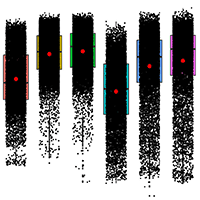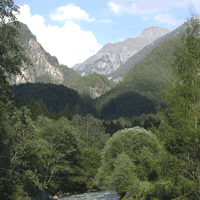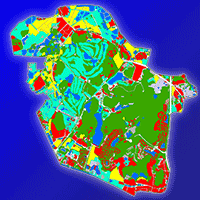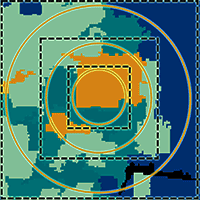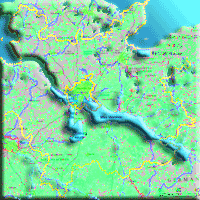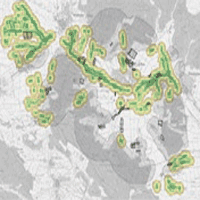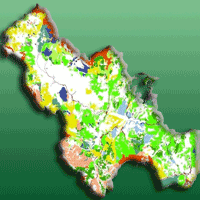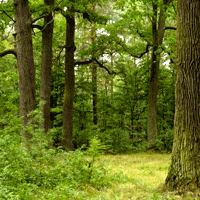
The Polish landscape changing due to forest policy and forest management
PS Mederski (1) , M Jakubowski (1), Z Karaszewski (2)
iForest - Biogeosciences and Forestry, Volume 2, Issue 4, Pages 140-142 (2009)
doi: https://doi.org/10.3832/ifor0503-002
Published: Jul 30, 2009 - Copyright © 2009 SISEF
Short Communications
Collection/Special Issue: EFI 2008 Annual Conference Week - Orvieto (Italy)
Adaptation of Forest Landscape to Environmental Changes
Guest Editors: Giuseppe Scarascia Mugnozza (CRA - Rome, Italy)
Abstract
This paper presents an analysis of policy application in Poland affecting landscape and forest management changes designed for an ecological restoration. “Ecological” policy was introduced in Poland in 1991 (Bill on Forests) and 1995-1999 (Decree 11 and 11A). To analyse the effectiveness of the policy and its impact on landscape change, the study uses five selected indicators: 1) species distribution, 2) methods of final felling, 3) forest functions in terms of protection and economic role, 4) cost structure and 5) wood production. The analysis shows that some of the ecological ideas were applied years before official documents were issued: species composition change, in favour of broadleaves has been carried out since 1945; since 1975, considerable growth in protective areas has been observed, doubling from 22.5 to 47.5% by 2006; timber resources have also grown by 50% in the last 35 years. After 1991, when the new policy was introduced, change in these indicators was more rapid. More direct and visible examples of policy applications in the last 15 years are observed in 1) the reduction of clearcuts: in 2005 this was at its lowest level in comparison with the previous 15 years and amounted to 19.9%; 2) the focus on protection: the cost of forest and fire protection in 2006 was the third largest expense in the State Forests budget, special attention was paid to reconstruction in order to increase water retention, 3) the afforestation process: this has doubled in intensity in the last decade compared with the previous decade. Nevertheless, organised landscape change is also accompanied by natural calamities, of which fires and windbreaks are most severe.
Keywords
Authors’ Info
Authors’ address
M Jakubowski
Department of Forest Utilisation, Poznan University of Life Sciences, ul. Wojska Polskiego 71A, 60-625 Poznan (Poland)
Forest District Czarnobór, The State Forests, Czarnobór 1, 78-400 Szczecinek (Poland)
Corresponding author
Paper Info
Citation
Mederski PS, Jakubowski M, Karaszewski Z (2009). The Polish landscape changing due to forest policy and forest management. iForest 2: 140-142. - doi: 10.3832/ifor0503-002
Academic Editor
Marco Borghetti
Paper history
Received: Apr 08, 2009
Accepted: Apr 09, 2009
First online: Jul 30, 2009
Publication Date: Jul 30, 2009
Publication Time: 3.73 months
Copyright Information
© SISEF - The Italian Society of Silviculture and Forest Ecology 2009
Open Access
This article is distributed under the terms of the Creative Commons Attribution-Non Commercial 4.0 International (https://creativecommons.org/licenses/by-nc/4.0/), which permits unrestricted use, distribution, and reproduction in any medium, provided you give appropriate credit to the original author(s) and the source, provide a link to the Creative Commons license, and indicate if changes were made.
Web Metrics
Breakdown by View Type
Article Usage
Total Article Views: 51468
(from publication date up to now)
Breakdown by View Type
HTML Page Views: 42465
Abstract Page Views: 3790
PDF Downloads: 4117
Citation/Reference Downloads: 48
XML Downloads: 1048
Web Metrics
Days since publication: 5986
Overall contacts: 51468
Avg. contacts per week: 60.19
Citation Metrics
Article Citations
Article citations are based on data periodically collected from the Clarivate Web of Science web site
(last update: Mar 2025)
Total number of cites (since 2009): 14
Average cites per year: 0.82
Publication Metrics
by Dimensions ©
Articles citing this article
List of the papers citing this article based on CrossRef Cited-by.
References
Hydrologic effects of a changing forest landscape of the committee on hydrologic impacts of forest management. The National Academies Press, Washington, DC, USA, pp. 180.
Gscholar

